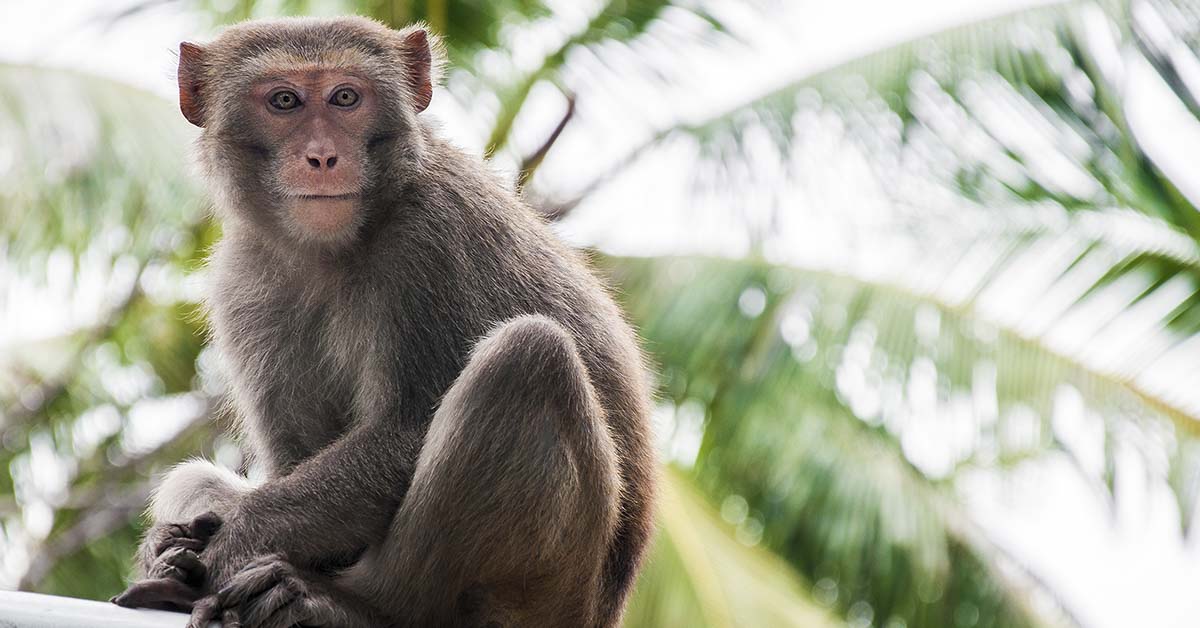Evolution is a fundamental concept in biology that explains the diversity of life on Earth and how species change over time. However, some individuals question its validity by asking questions like “If evolution is real, why are there still monkeys around today?” This article aims to address this common misconception and shed light on the principles and relationship between humans and monkeys and the ongoing scientific support for evolutionary theory.
Theory of Evolution
Evolution is how living organisms adapt to their environment over generations through genetic changes. These adaptations occur due to variations in individuals’ genes, some of which provide advantages in surviving and reproducing. As individuals with beneficial traits pass these genes on to their offspring, they become more prevalent in subsequent generations, leading to the emergence of new species that are more fit to their surroundings.1
In the scientific community, it is a well-supported explanation that has been extensively tested and is backed by substantial evidence. Evolution, like gravity and plate tectonics, is a scientific theory, not a mere hypothesis. It is firmly grounded in abundant evidence from various disciplines, enabling scientists to make predictions and conduct further investigations.
How does Evolution Explain Complex Organisms like Humans?
Complex organisms, such as humans, result from gradual evolutionary processes that have unfolded over billions of years. Modern humans have evolved from earlier primates and inherited traits from various ancestors, including mammals, vertebrates, and the oldest living organisms. Through incremental changes in physical traits and behaviors, humans have gradually developed into the species we are today.
Humans and monkeys are both primates, but they do not share a direct evolutionary lineage. Humans and chimpanzees, however, share a common ancestor that existed between 8 and 6 million years ago. While humans and chimpanzees evolved separately from this common ancestor, all apes and monkeys, including humans, share a more distant relative that lived approximately 25 million years ago.

Did humans evolve in a straight line, one species after another?
Human evolution does not follow a linear progression. Instead, it forms a branching pattern, with various species diverging from common ancestors. The human species, Homo sapiens, is the sole survivor of this process, but there were instances in the past when multiple early human species coexisted.
The theory is widely accepted among scientists and serves as the foundation of modern biology. There is no scientific controversy against its occurrence or its role in explaining the history of life on Earth. However, ongoing research and debate focus on refining the understanding of how evolution occurred and exploring specific details of different evolutionary events.
Scientists employ various dating methods to determine the age of fossils, human artifacts, and associated sediments. These methods have been developed and refined over time and can provide accurate estimates for objects dating back millions of years. Additionally, cross-validation among different dating methods enhances the reliability of these age determinations.
They also gather evidence about past climates from various sources, including sediment cores from the ocean bottom. These cores contain the fossils of tiny organisms called foraminifera, whose oxygen content calculates temperature and moisture fluctuations over millions of years. Such data reveal significant climate variations, some of which coincide with crucial periods in human evolution.
Since Charles Darwin’s time, significant advancements have been made in the understanding of evolution. These include confirming the age of Earth, discovering DNA as evidence of shared ancestry, and unearthing numerous fossils that provide insights into the transitions between different life forms over time.
Read: Humans may have all come from one African country, study says
Science vs Religion
While some perceive a conflict between evolution and religious faith, others find harmony between the two. Many religious leaders and organizations acknowledge that evolution offers the best scientific explanation for the diversity of life on Earth. They recognize that religious beliefs and evolutionary science answer different questions and can coexist without contradiction.
Promoting respectful dialogue and recognizing the compatibility of religious faith and scientific understanding can help reduce the perceived conflict between religion and evolution. Many scientists who practice a faith find enrichment in both areas of knowledge and see them as complementary rather than conflicting. Encouraging individuals to explore scientific findings and determine how they align with their personal beliefs fosters a more constructive relationship between religion and science.
Gaps in knowledge are inherent in scientific inquiry and serve as motivation for ongoing research and discovery. The study of human origins is an active field that continually generates new findings and deepens our understanding of the evolution of our species. Scientists work diligently to fill these gaps and expand our knowledge of how we became human.
Evolution and cultural beliefs about our origins
Cultural beliefs about human origins are diverse and often expressed through various creation stories. These stories serve important cultural functions, helping people develop their identity and understand their place in the world. Scientific research, based on rigorous methods, provides an alternate perspective on human origins that complements these cultural beliefs while offering insights grounded in empirical evidence.
Two common objections to evolution are: the claim that evolution is “just a theory” and the question of why monkeys still exist if humans are from them. These objections arise from misconceptions about the scientific meaning of theory and misunderstandings about the evolutionary process. Understanding the scientific definition of theory and the concept of a common ancestor can help address these objections and clarify the principles of evolution.2
Conclusion
The theory of evolution is a well-supported scientific explanation for the diversity of life on Earth. It operates through gradual changes over time, leading to the emergence of new species better adapted to their environments. Humans and monkeys share a common ancestor but have evolved separately. Evolutionary science continually advances, and its compatibility with religious beliefs provides opportunities for respectful dialogue and understanding. By dispelling misconceptions and promoting scientific literacy, we can foster a more accurate understanding of evolution and its profound implications for our understanding of life’s history.
Keep Reading: Human Origins: We’re All From Africa, Just Not In The Way We Thought
Sources
- “Frequently Asked Questions” Human Origins
- “If evolution is true, why are there still monkeys?” Technician Online. Daniel Root. September 28, 2015.

